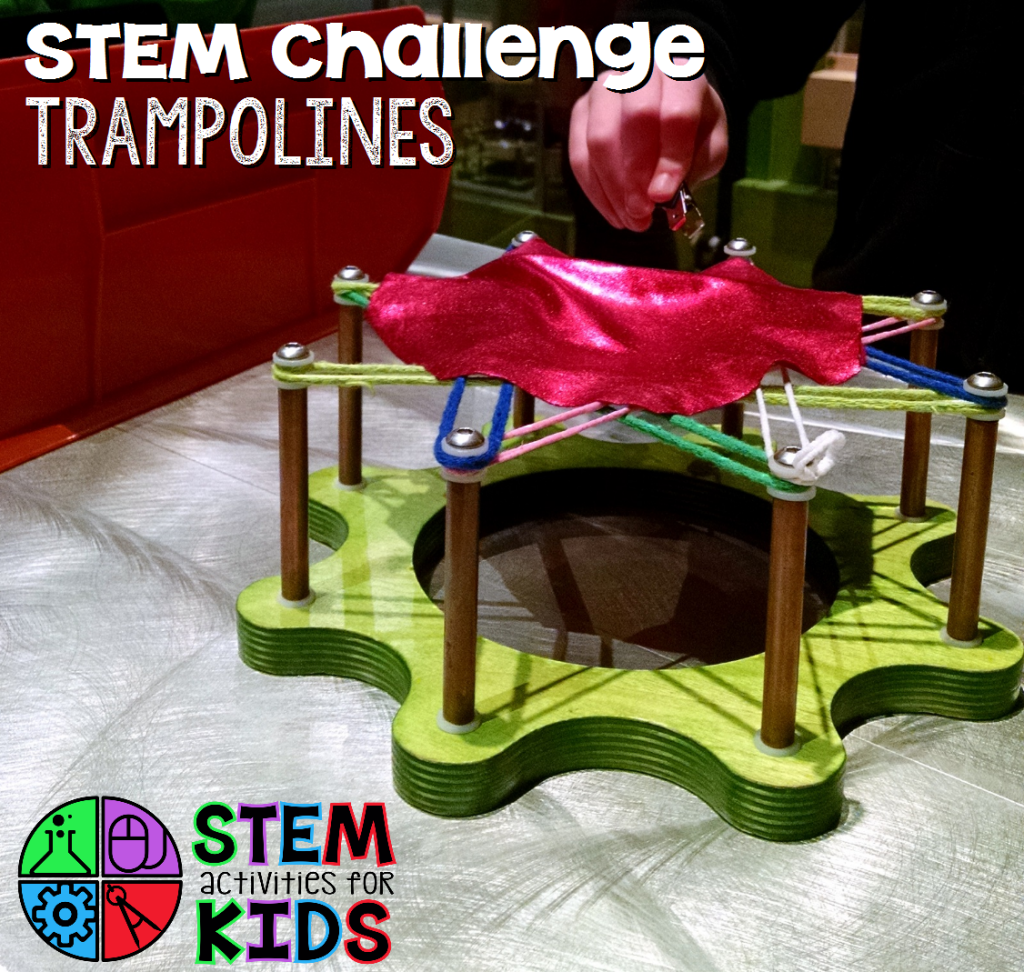
Trampoline STEM Challenge
The other day we took a field trip to the Museum of Science in Boston. They have an engineering workshop set up most mornings, which is always a lot of fun. This week the challenge was Extreme Trampolines. They provided trampoline bases, bands to make the structure, and fabric to clip on and distribute the weight/provide a trampolining surface. The museum always has amazing testing equipment. They had drop boxes set up so that the students could place their trampoline inside, shut the door, and press a button for a ball to drop on the trampoline. There was even a sensor and a readout display that showed how high their ball bounced! There is no doubt that the trampoline STEM challenge was a favorite among museum goers.
Looping the bands on the support posts:
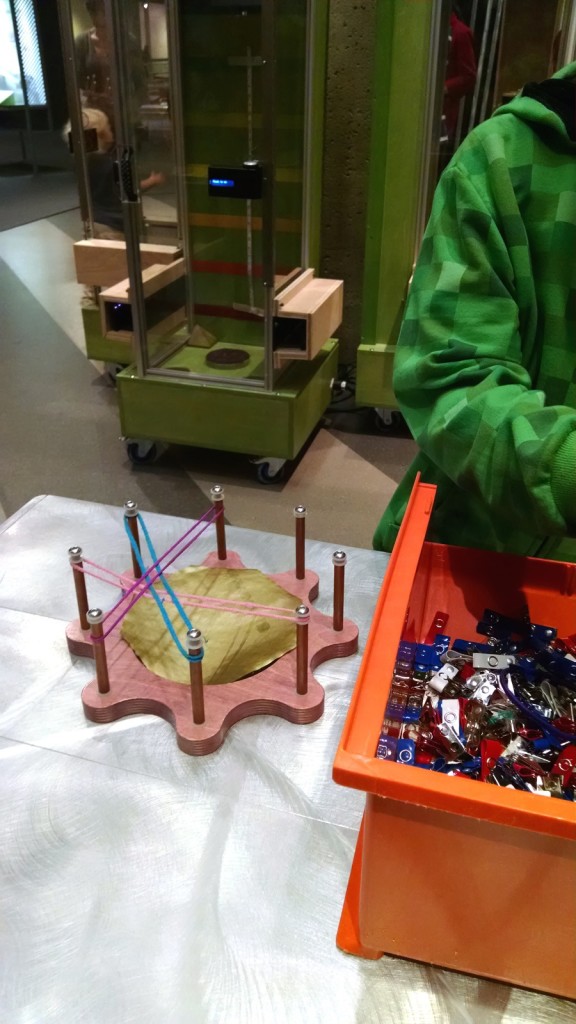 Next, they could choose different fabric to clip on. There were some that were thick and strong but not stretchy, others that were textured, and so on.
Next, they could choose different fabric to clip on. There were some that were thick and strong but not stretchy, others that were textured, and so on.
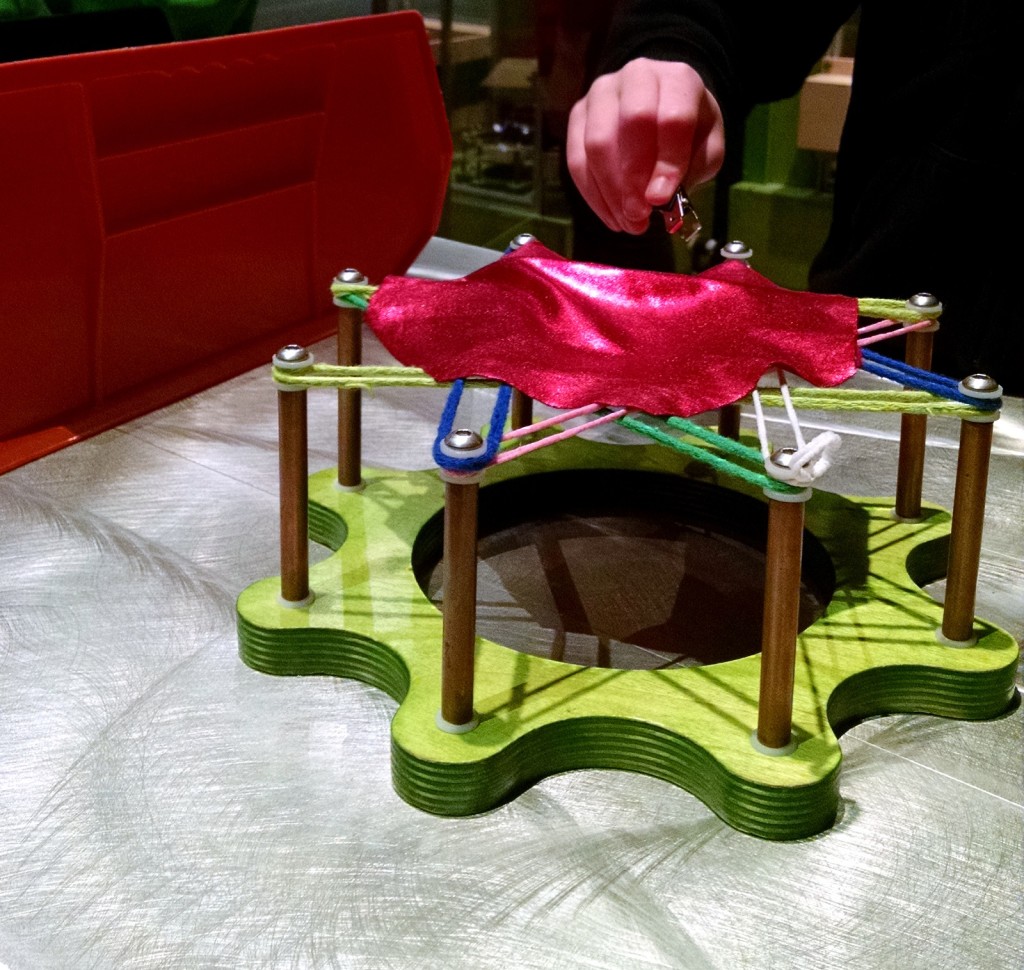
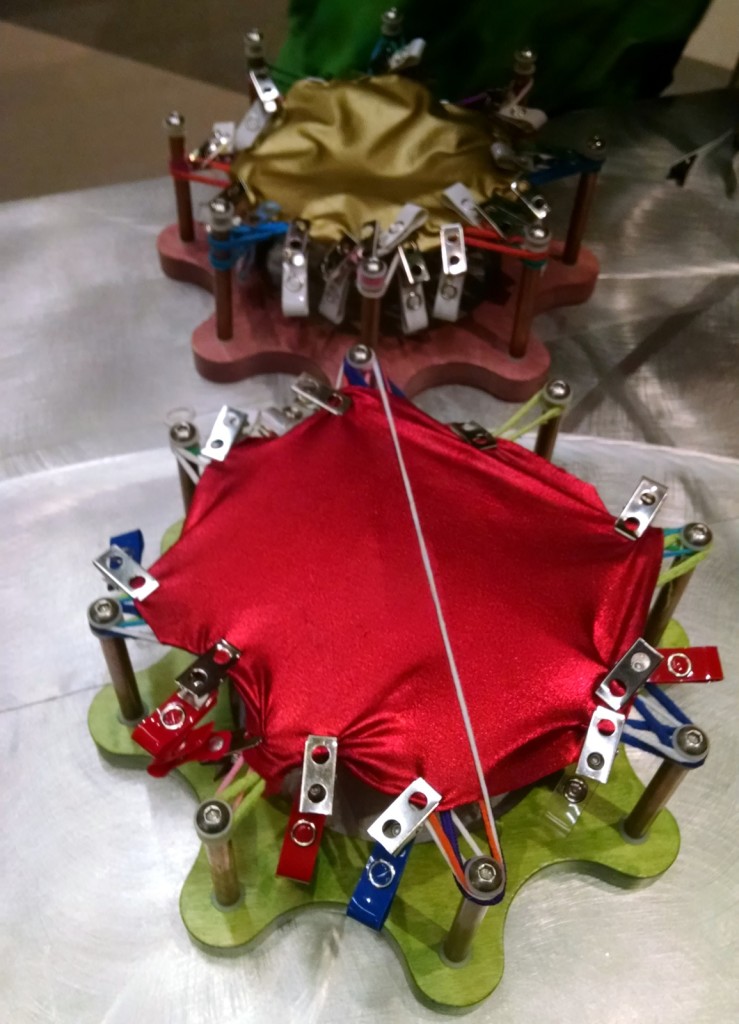
When the trampolines were complete, they got to test them out! They could try for either the highest and lowest bounce, make improvements, and test again.
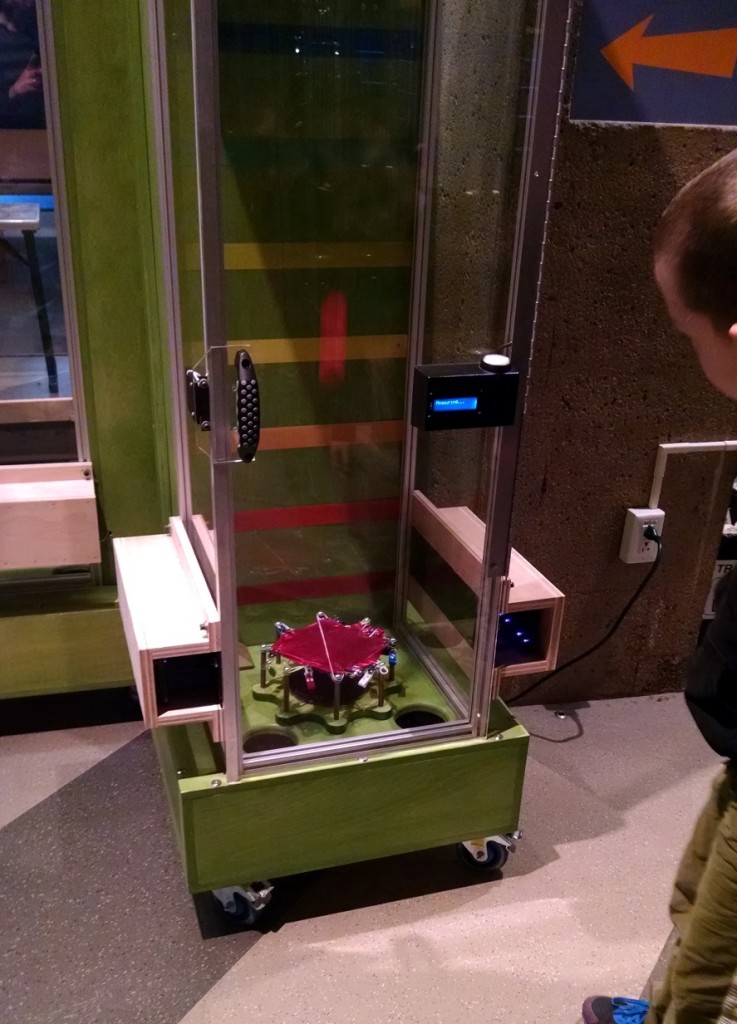
While this was TONS of fun, I know it is not practical to build all of this equipment for a classroom or at home. So for the past couple of days I have been thinking how to make this activity more accessible to everyone. I think I may have found a solution, and it unsurprisingly happened in the kitchen, were many amazing STEM tools can be found.
Trampoline STEM Challenge in the Classroom or at Home
What you need:
- colander
- rubber bands
- toothpicks
- binder clips
- material
- a ball
- masking tape
Start by threading one end of a rubber band through a colander hole. Secure with a toothpick and start stretching the rubber band across the colander. Push the other end of the rubber band through another colander hole and secure with a toothpick! This requires fairly advance fine motor control, so either do this with upper elementary kids or be prepared to help out with this step.
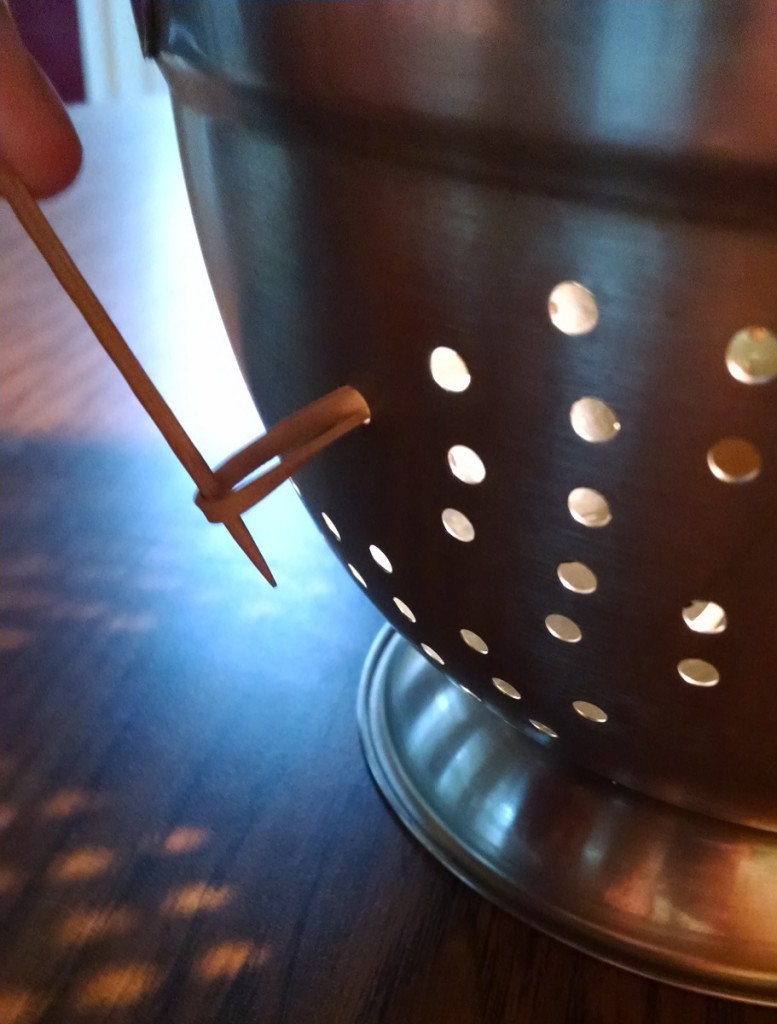
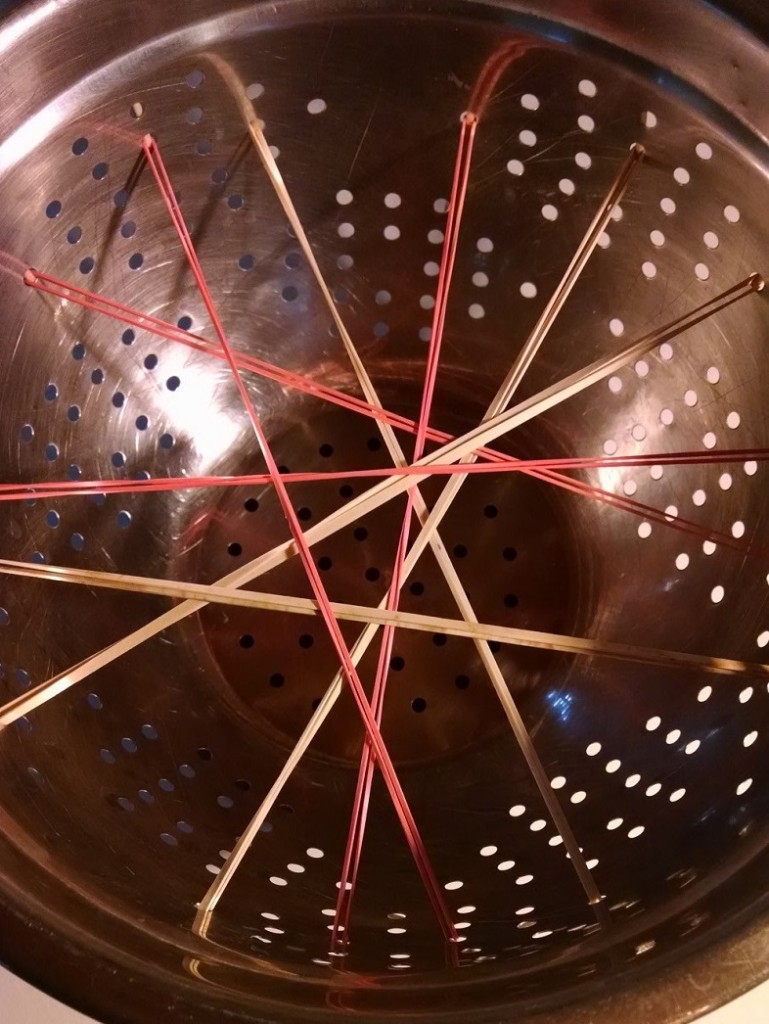
When you feel that enough rubber bands are in place to support the trampoline, you can add a piece of fabric. You will probably want to have these pre-cut ahead of time. For this test, we just used a plastic bag:
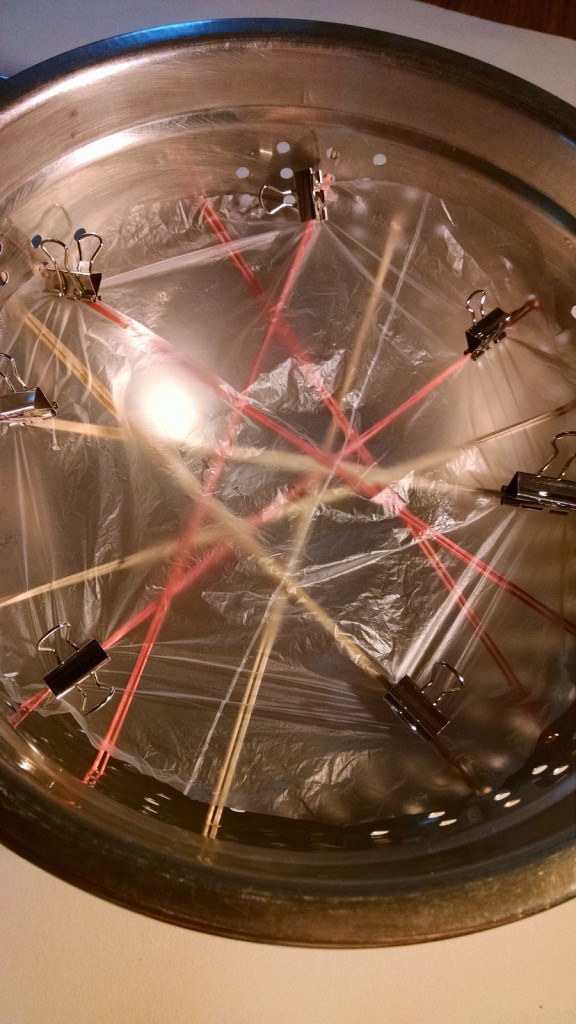 Secure the material with binder clips and get ready to test your trampoline! We tried a variety of balls. Ping pong balls are great because they will not bounce out of control and are light enough to not hurt anyone. If you are doing this with older kids or a small group, you might want to try a super bouncy ball. For testing, we placed masking tape (painter’s tape) at 1 foot increments to get an idea of how high the balls bounced!
Secure the material with binder clips and get ready to test your trampoline! We tried a variety of balls. Ping pong balls are great because they will not bounce out of control and are light enough to not hurt anyone. If you are doing this with older kids or a small group, you might want to try a super bouncy ball. For testing, we placed masking tape (painter’s tape) at 1 foot increments to get an idea of how high the balls bounced!
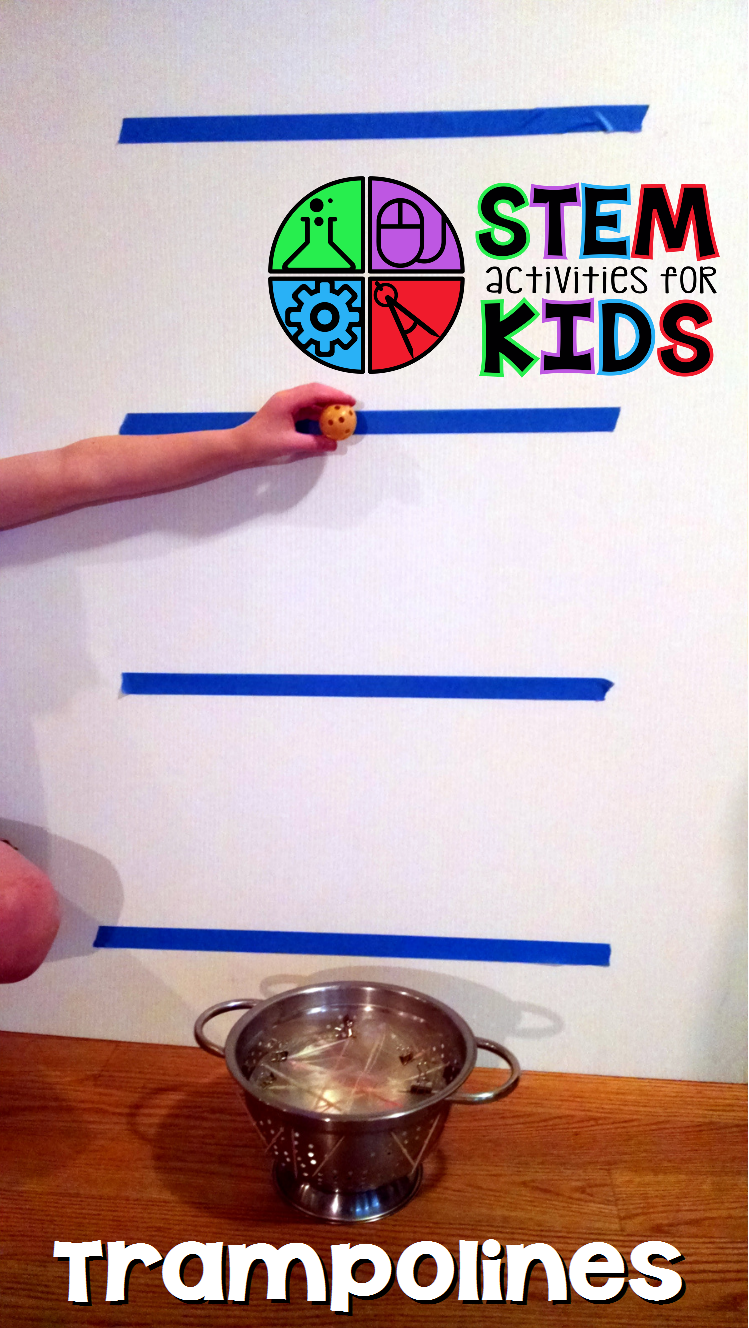
That’s it! Extreme trampolines you can do at home or school, with supplies you probably already have.




20 Comments
Leave your reply.